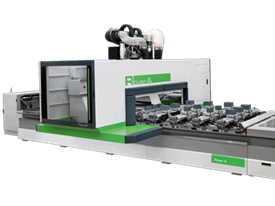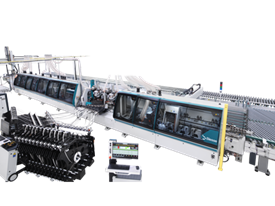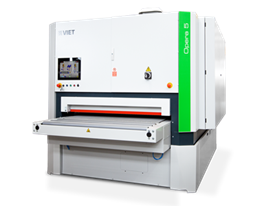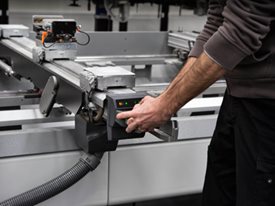If you have experience conducting business in any area of the economy, you may already be aware of how expensive it is for an employer to find qualified employees.
The phrase "managing labor cost" frequently conjures up pictures of general cost reduction, wage reduction, and employee layoffs. All of them would reduce a company's overall expenditures, but they are harsh measures that should only be employed in extreme cases. Of course, the products and services provided to clients would decline, which will have a negative impact on sales.
You probably experience the same demand to cut the labor budget for your company. So, how can a business owner proactively address labor costs in manufacturing and improve operations without upsetting the apple cart?
How to Manage Labor Costs in Manufacturing & Increase Output
These tactics are intended to build your business rather than weaken it, positioning it for future growth. Employee satisfaction and output will increase, and you'll have more insight into your spending overall, including how it's being used.
Remember that managing labor expenditures requires the use of efficient, all-inclusive time and labor tools and solutions.
1) Cut back on the number of hours worked
Making some previously full-time positions part-time can help your company save a lot of money. Most workers would rather lose their job than take an hourly pay drop.
Job sharing, which is an arrangement where two part-time employees share a full-time working schedule, is a fantastic approach to accomplish this.
By having two people work on the schedule of one employee, you can reduce labor costs in manufacturing and, if planned and implemented properly, eliminate the need for additional office space because neither employee will need to occupy the area concurrently.
2) Change your rosters to reflect the culture of your business
The majority of your scheduled events and customer consultations may occur on the weekends if you manage an event planning business.
It would be wise to adjust your company's schedule to accommodate your business operations in this case by reducing staffing levels and weekday hours when business is lagging so that you can manage all customer requests with a small team.
This arrangement will undoubtedly benefit your company more than instituting a traditional workweek.
3) Benefit from affordable laborYou can reduce the amount you might spend on labor whenever your firm is operating at its peak and you see that you need additional support to manage the constantly increasing demand by recruiting interns rather than full-time workers who are paid full-time wages.
4) Employ technologyWhen properly applied, technology is a powerful instrument for significantly reducing labor expenses.
Business owners may automate a number of operations using computers and the internet of things to cut the cost and time of manufacturing. By alone, this action can help you save a significant sum of money that would have been required to carry out these tasks manually.
5) Draw from the talent pool of the worldDid you know that an employee performing the same activity in Ukraine earns an average yearly salary that is more than three times lower than that of an employee performing the same task in America?
Cutting labor expenses and managing labor shortage in manufacturing can be taken care of by utilising the global talent pool is a clever method to lower production costs, but it's also a means to revitalise the spirit of your organisation through diversity and fresh viewpoints.
6) Examine your payment methodReviewing your payment model, or more specifically, how your staff are compensated, is a terrific approach to save costs.
When you can no longer afford to pay your employees a specific amount of money, switching to a new financial model may be the best option to reduce costs. You may have previously compensated your staff based on an hourly wage or a fixed salary.
A commission arrangement is one of the flexible methods you can use. You can pay your employees depending on the value they add to the company rather than offering them a set salary.
You can replace your full-time employees with independent contractors who operate under a commission arrangement to accomplish this successfully.
7) Offer Top-Notch Training
An educated staff increases output and decreases rework. Establish a training programme for staff members that includes both initial training to help them catch up fast and ongoing training to help them stay up to date.
A workforce that has received excellent training is also more likely to be using best practices in their various roles and to be more independent.
8) Improve Safety
Manufacturers would be sensible to endeavour to increase security at their sites on a constant basis.
Your staff are ultimately your most important resource; without them, nothing would be possible! Assure them of a safe, sanitary, and clean working environment. Best-in-class safety procedures can be put in place to lessen the likelihood of mishaps and pricey workers' compensation claims.
9) Lean Manufacturing
Manufacturing processes without a value addition are eliminated by lean production. Lean production improves and can potentially quadruple labor productivity when completely adopted inside the organisation. It also drastically reduces inventory and production throughput times. In essence, a more effective production process allows workers to produce more units, which reduces your labor cost per unit.
Lean production aids in removing bottlenecks from the conventional production line in addition to reducing non-value-added procedures.
Conclusion
It is not necessary to lay off employees in order to reduce labor shortage in manufacturing along with labor cost in manufacturing . Additionally, it is not about eliminating commission or wage freezing. Instead, carefully examine the factors that have a direct impact on the rates of labor cost spending and think about restructuring to increase efficiency.
This means that the company can adjust when labor expenses change—which they do frequently—instead of entering an expensive crisis mode.
Suggestions on how can a business owner proactively address labor costs in manufacturing and improve operations by adjusting labor expenses.



.png)





 Worldwide
Worldwide
 Italia
Italia
 United Kingdom
United Kingdom
 Россия
Россия
 France
France
 中国
中国
 Asia
Asia
 Deutschland
Deutschland
 España
España
 Schweiz
Schweiz
 North America
North America
 India
India
 Australia & New Zealand
Australia & New Zealand
 Türkiye Cumhuriyeti
Türkiye Cumhuriyeti
 Middle East
Middle East
 Brasil
Brasil